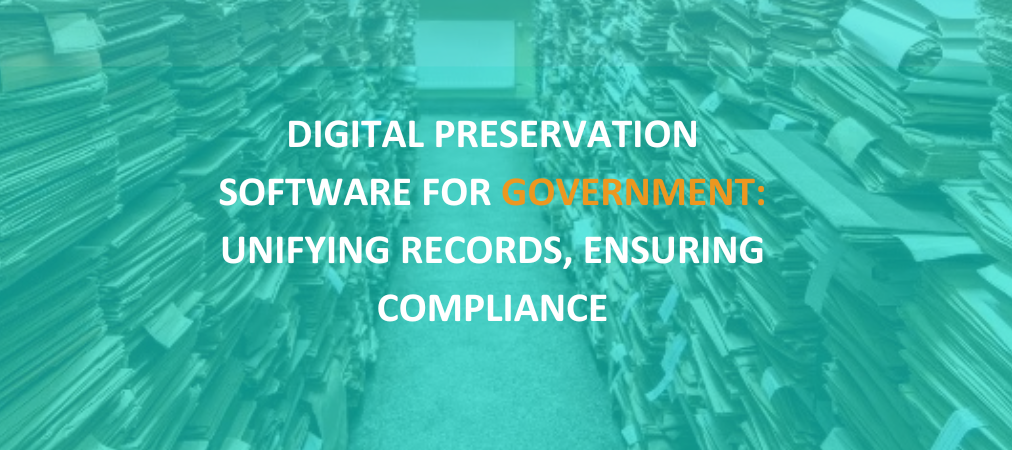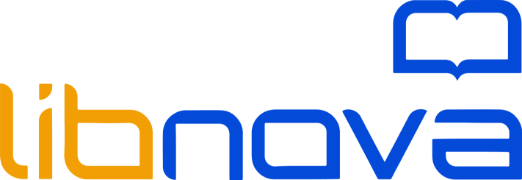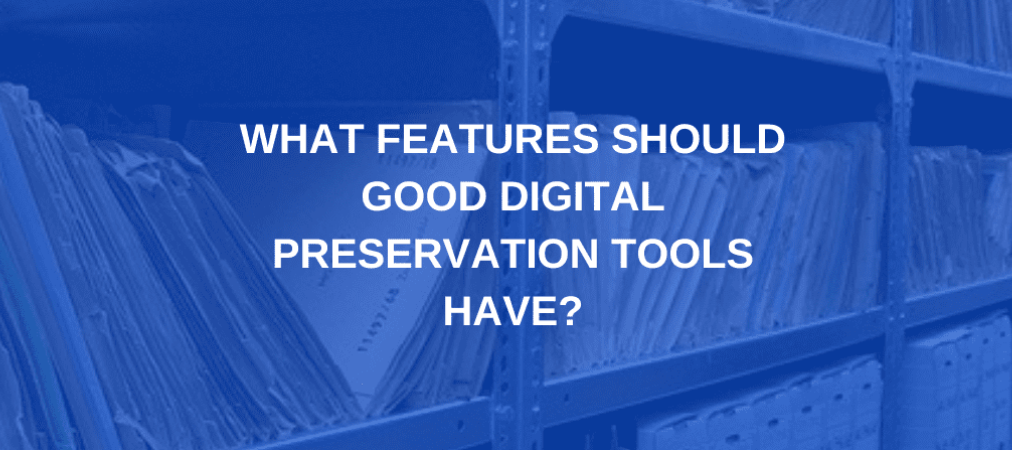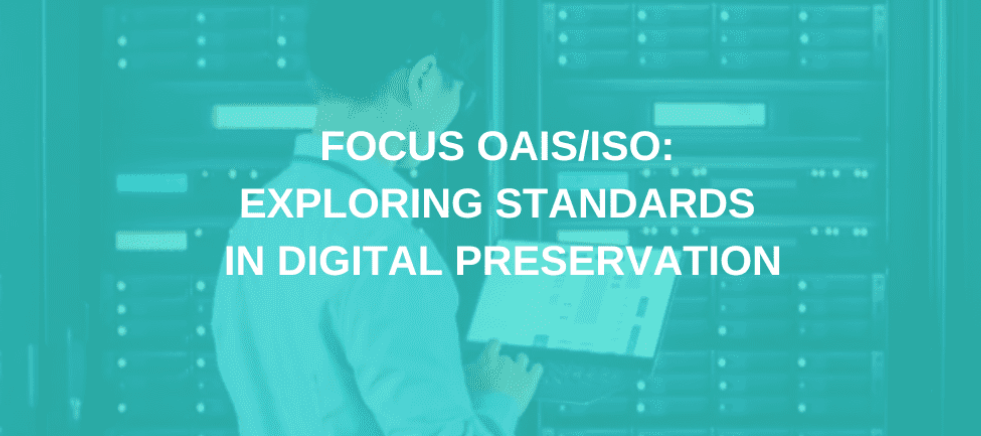
Digital Preservation Software for Government: Unifying Records, Ensuring Compliance
Government institutions are at the heart of societal memory and legal accountability. Every day, departments generate and manage thousands of digital records, legal documents, administrative files, research data, and citizen information. Preserving these records isn’t just about storage. It’s about safeguarding public trust, ensuring compliance with legal mandates, and maintaining long-term access to information.In this context, the role of digital preservation software for government becomes critical. Traditional document management systems or backups are no longer sufficient. What’s needed is a modern, standards-based infrastructure that unifies departments and archives under a cohesive digital preservation strategy.The Challenge: Fragmented Recordkeeping and Rising RiskAcross the globe, national archives face growing challenges. The digital records under their custodianship are increasing in both volume and complexity. Yet many public sector organizations continue to rely on manual processes, siloed systems, and inconsistent retention enforcement.This fragmented approach results in serious vulnerabilities:Loss or corruption of digital files Unauthorized or premature record disposal Difficulty enforcing retention schedules Inability to demonstrate transparency and legal compliance Missed preservation of historically valuable informationNational archives must juggle the dual role of governance and long-term stewardship. Without a unified and enforceable infrastructure, coordination between archives and government departments becomes reactive, inefficient, and error-prone.The Solution: Integrated Digital Preservation Across GovernmentALibnova has developed a modular, scalable, and standards-aligned digital preservation software for government institutions that bridges the operational needs of departments with the long-term stewardship responsibilities of national archives.This innovative solution consists of two interconnected environments:Department-Level Instance (Libsafe GO)Each public body operates an independent and secure environment to manage its digital records. These decentralized instances allow departments to:Manage records in line with internal policies Apply department-specific retention schedules Automate disposition and litigation hold workflows Operate autonomously while maintaining complianceNational Archives Instance (Libsafe Advanced)A centralized and robust preservation infrastructure aligned with international standards (OAIS, PREMIS, METS) that:Ensures authenticity, fixity, and long-term accessibility Receives eligible records from departments upon final disposition Supports public access via integrated discovery layers Manages metadata and format characterization at scaleThis architectural model allows records to flow seamlessly from their point of creation to permanent preservation, respecting all governance, legal, and archival policies along the way.Key Features Designed for Government NeedsALibnova’s solution is purpose-built to meet the complex and evolving demands of government information management. Core capabilities include:Automated Retention ComplianceDepartments can bulk-upload structured retention schedules (e.g., in CSV format). The system applies tailored policies, tracks timelines, and automatically flags records for transfer or deletion—ensuring compliance with national regulations.Lifecycle Automation Engine: From creation to transfer or purge, every stage in the digital record lifecycle is managed automatically. Approval workflows allow public bodies to apply litigation holds or justification notes, providing transparency and legal defensibility. Safe Testing Environments: Departments can simulate configurations and workflows in sandbox environments before going live—ideal for training and avoiding disruption. Secure Transfer and Access Control: Records are securely transferred to the national archive once eligible, maintaining integrity and audit trails. Access controls and encryption ensure confidentiality and data protection throughout the lifecycle. Public Access through OpenAccess: Archives can expose selected content—such as cultural heritage records or public reports—through OpenAccess, Libnova’s discovery module. With multilingual support, filtering, and multimedia compatibility, OpenAccess transforms archives into engaging digital portals.Benefits for Government InstitutionsFBy adopting Libnova’s digital preservation architecture, government agencies and national archives benefit from:Transparency and Cost ControlResource usage tracking supports fair billing models and helps institutions measure impact and efficiency.Legal and Regulatory ComplianceAdheres to national legislation and international archival standards, reducing institutional risk.Operational EfficiencyReduces manual processing, improves coordination, and automates retention and disposition tasks.Scalability and FlexibilitySuitable for pilot projects or national rollouts. Multi-tenant design allows phased implementation and growth.Sovereignty and SecurityFully configurable to align with national security, data residency, and internal policy requirements.InteroperabilityAPI-driven and compatible with existing records management, digitization, and metadata systems.Real-World Impact: A Model for National ArchivesThis model has already been adopted by forward-thinking national archives around the world. By directly integrating public departments into a cohesive preservation framework, these institutions are:Improving collaboration between archives and departments Enforcing policy compliance at the source of record creation Reducing silos and manual interventions Securing institutional memory for future generations Providing transparent access to information for citizens and researchersMore than just a technology stack, this is a strategic transformation in how public records are governed, preserved, and made accessible.Ready to Lead the Way in Digital Preservation?Digital preservation is no longer optional for governments—it’s essential. As technology evolves and public expectations rise, institutions must move beyond fragmented tools toward a sustainable, integrated strategy.Libnova’s digital preservation software for government provides the foundation for that transformation. With automation, compliance, and long-term preservation built in, it empowers national archives and government departments to meet their responsibilities—today and into the future.Whether you’re a national archive, ministry, or public agency, Libnova is ready to help you modernize your digital preservation infrastructure.👉 Contact our team to schedule a personalized demo or learn how other governments are building long-term success with Libnova.




